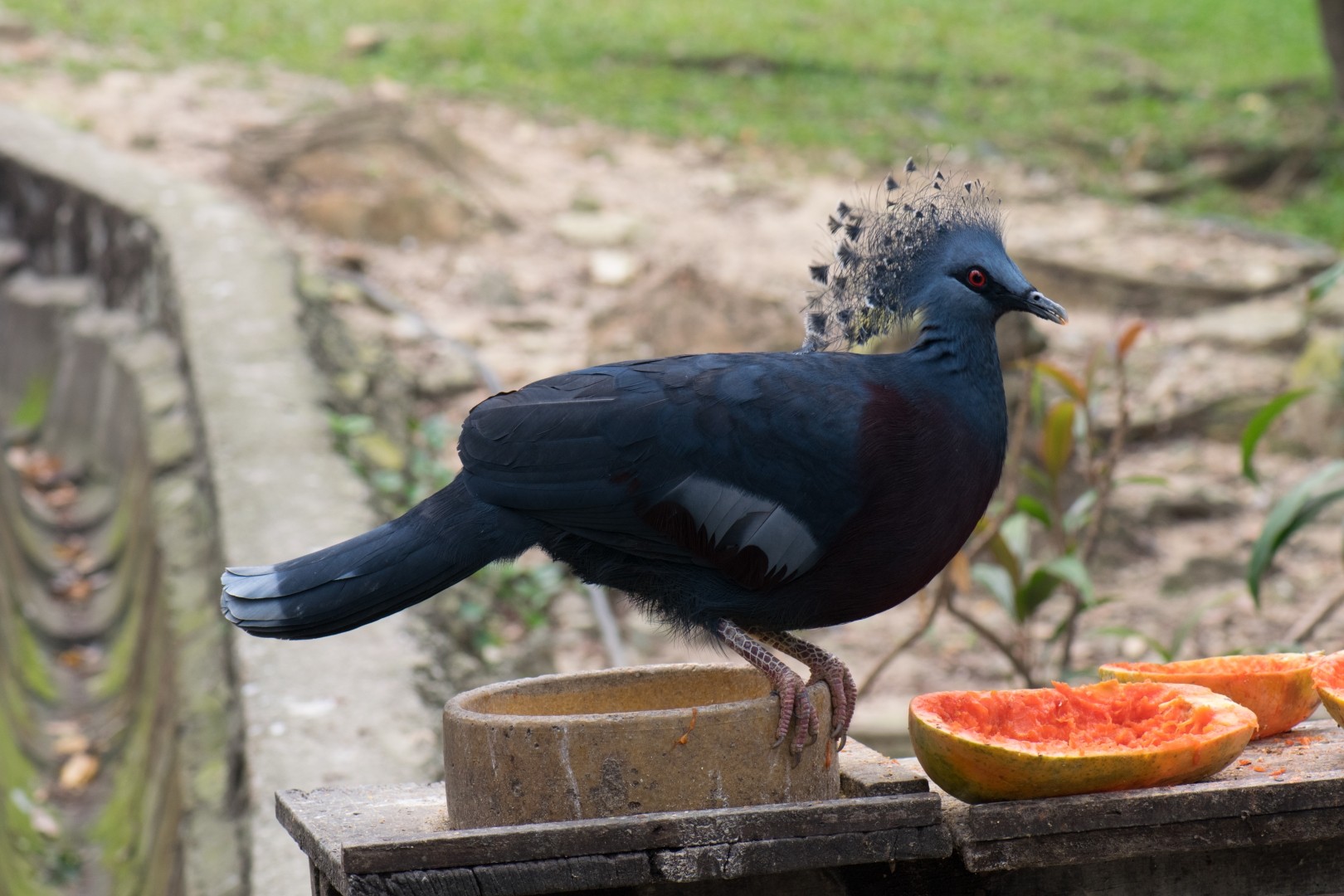Victoria Crowned Pigeon
A species of Crowned Pigeons Scientific name : Goura victoria Genus : Crowned Pigeons
Victoria Crowned Pigeon, A species of Crowned Pigeons
Botanical name: Goura victoria
Genus: Crowned Pigeons
Content
Description General Info
Description
The victoria Crowned Pigeon has striking blue and maroon feathers topped off with a majestic crown of feathers, making it look like it's straight out of a storybook. This species of pigeon is one of the largest in the world and boasts a peaceful and serene disposition. 
Size
74 cm
Life Expectancy
15-25 years
Nest Placement
Ground
Feeding Habits
Victoria Crowned Pigeon primarily consume fallen fruit, berries, and seeds. They forage on the ground, keenly adapted to their diet with a preference for certain fruit varieties, exhibiting unique behaviors while feeding.
Habitat
The victoria Crowned Pigeon primarily inhabits lowland regions and is associated with several types of forest environments, including swamp areas, sago palm forests, and drier forest regions. These birds are typically found within continuous forest landscapes, up to elevations of 400–600 meters, though they avoid fragmented forests. Their distribution encompasses broad tropical regions where these habitat types are present.
Dite type
Frugivorous
General Info
Feeding Habits
Bird food type

Fruit
Behavior
Like other crowned pigeons, the Victoria crowned pigeon is a gregarious species. They usually travel in pairs or small parties as they search for food. They walk with an unhurried gait along the forest floor. Their food typically consists of fallen fruit. Birds of this species in captivity are particularly fond of eating figs. Seeds and invertebrates may occasionally supplement the diet. When disturbed, these birds fly straight up into the canopy or a large horizontal branch of a large forest tree. After being disturbed, they may remain on their perch for a considerable time engaging in contact calls and flicking their tails. In the wild, this species tends to be shier than the western crowned pigeon, but can still occasionally be quietly approached. The males regularly engage in aggressive displays to establish dominance. In these interactions, the pigeons puff up their chests and repeatedly raise their wings as if preparing to strike their opponent. They also make short dashes at each other and may actually hit one another, but rarely make contact and can be completely peaceful towards other males outside of the early mating season. 
Species Status
The Victoria crowned pigeon is now the most rarely occurring of the three crowned pigeon species in the wild, although it is the most widely kept species in captivity. Perhaps the most pressing threat to the species is continuing habitat loss due to logging. It now quite uncommon near human habitations because it is heavily hunted around them, particularly in areas where gun possession is prevalent. It can be quite tame and easily shot, though now seems to be fearful of humans in the wild. Most hunting is for its plumes and meat. Trapping of pigeons to be kept alive for captive collections is now illegal, but is still likely to be occurring. The Victoria crowned pigeon is evaluated as Near Threatened on the IUCN Red List of Threatened Species. It is listed in Appendix II of CITES. 
Scientific Classification
Phylum
Chordates Class
Birds Order
Pigeons and doves Family
Dove Genus
Crowned Pigeons Species
Victoria Crowned Pigeon 